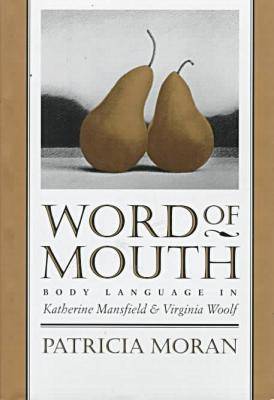Feminist Issues: Practice, Politics, Theory S.
1 total work
"Word of Mouth" focuses on the two most prominent women in British modernism, Virginia Woolf and Katherine Mansfield. Both wrote with an extraordinary and sometimes celebratory self consciousness about their status as "women writers". At odds with their explicit privileging of female difference, however, are pattens of imagery that demonstrate self-revulsion and self-hatred, the woman writer's rejection of herself. Patricia Moran points out that strategies of resistance and challenge are also strategies of repudiation and revulsion directed at female embodiment. Mansfield and Woolf shared the belief that what women experienced could not be translated directly into language; both believed that language and narrative conventions worked as forcefully as social customs to limit female self-definition and self-expression. Both were exemplary and poineering figures of resistance, and their work repudiates, deliberately and largely successfully, patriarchal devaluations of femininity. Yet a close reading of their work betrays an underlying conflict about those devaluations.
Symptomatic self-presentations, infused with revulsion for the female body's materiality, demonstrate how deeply devaluations of women cripple and deform women's estimation of themselves. Moran looks at the textual forms assumed by fear and hatred of the female body and at how they cripple the mind. "Word of Mouth" reevalautes Mansfield and Woolf, focusing on the figures of the anorexic and the hysteric and on the extensive imagery of eating, feeding, starvation, suffocation, flesh, and longing that permeates both fictional and nonfictional texts; it locates this writing within the overlapping frames of psychoanalytic theory, studies of women and eating disorders, and feminist work on women's anxiety of authorship.
Symptomatic self-presentations, infused with revulsion for the female body's materiality, demonstrate how deeply devaluations of women cripple and deform women's estimation of themselves. Moran looks at the textual forms assumed by fear and hatred of the female body and at how they cripple the mind. "Word of Mouth" reevalautes Mansfield and Woolf, focusing on the figures of the anorexic and the hysteric and on the extensive imagery of eating, feeding, starvation, suffocation, flesh, and longing that permeates both fictional and nonfictional texts; it locates this writing within the overlapping frames of psychoanalytic theory, studies of women and eating disorders, and feminist work on women's anxiety of authorship.
